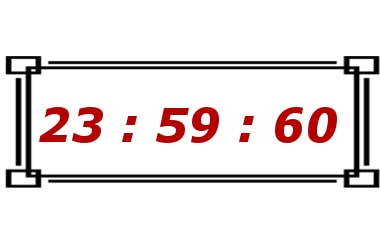
To maintain accuracy, NASA said its missions, including the Solar Dynamics Observatory, or SDO, which continuously watches the sun, will join official clocks around the world in adding a leap second to the final minute of 2016.
On December 31, 2016, official clocks around the world will add a leap second at 23 hours, 59 minutes and 59 seconds Coordinated Universal Time (UTC).
Clocks do this to keep in sync with Earth's rotation, which gradually slows down over time. When the dinosaurs roamed Earth, for example, our globe took only 23 hours to make a complete rotation. In space, millisecond accuracy is crucial to understanding how satellites orbit.
SDO moves about 1.9 miles every second. So does every other object in orbit near SDO. We all have to use the same time to make sure our collision avoidance programs are accurate. So we all add a leap second to the end of 2016, delaying 2017 by one second.
The leap second is also key to making sure that SDO is in sync with the Coordinated Universal Time used to label each of its images.
Designed to help us understand the sun's influence on Earth and Near-Earth space, SDO was launched in 2010.
It has a clock that counts the number of seconds since the beginning of the mission.
To convert that count to UTC requires knowing just how many leap seconds have been added to Earth-bound clocks since the mission started.
When the spacecraft wants to provide a time in UTC, it calls a software module that takes into consideration both the mission's second count and the number of leap seconds and then returns a time in UTC.
UTC - Coordinated Universal Time- Coordinated Universal Time (UTC) is the basis for civil time today. This 24-hour time standard is kept using highly precise atomic clocks combined with the Earth's rotation
- UTC is the time standard commonly used across the world. The world's timing centers have agreed to keep their time scales closely synchronized - or coordinated - therefore the name Coordinated Universal Time.
- Universal Time (UT) was created at the Washington Meridian Conference in 1884. This is the basis for the 24-hour time zone system known today.
Two components are used to determine UTC
- International Atomic Time (TAI)
- Universal Time (UT1)